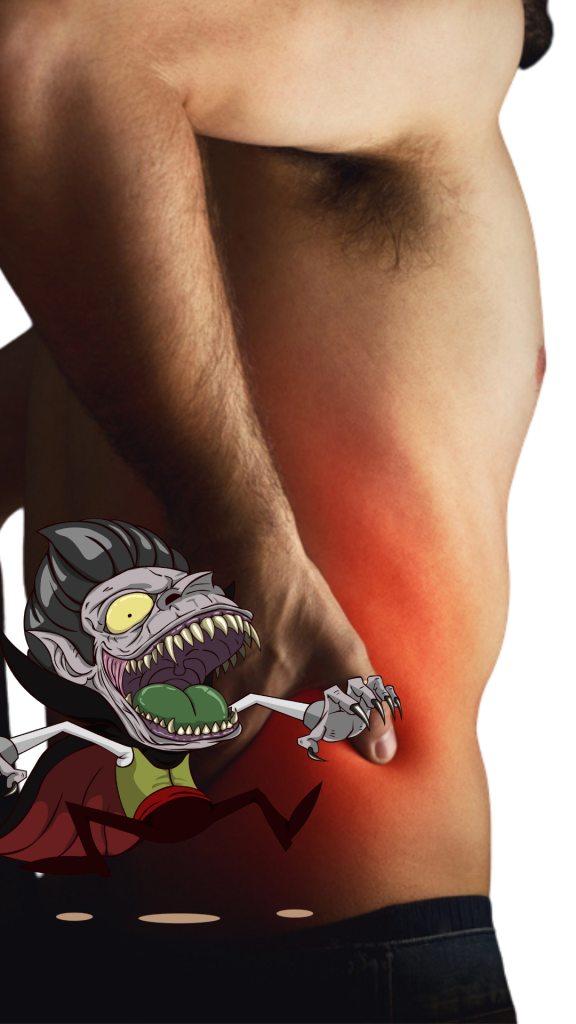What if I told you your back pain might be caused by the Lumbar Leprechaun?

Let’s say I built a course teaching you how to assess for signs of the Lumbar Leprechaun, how to treat for the effects it has on people, and how to use ‘clinical reasoning’ to guide treatment strategies based on where the Leprechaun is sitting today.
You might ask:
“Wait… how do you know the Leprechaun is real?”
Exactly. You’d have to know that it’s real to begin with, because everything else is based upon that premise.
That’s epistemic validity in a nutshell.
If you can’t even prove the thing you’re talking about exists, define it clearly, or measure it consistently, then everything you build on top of that idea is fiction. One caveat here, before I get an avalanche of comments where people say I’m slagging Massage Therapy – I’m not saying that treatment doesn’t work, it’s just that it doesn’t work for the reasons often hypothesized.
Clinical Reasoning Is Only As Good As What It’s Built On
We often hear something like:
Why do I think this concept is valid? Well, I know it’s valid because it worked.
That’s not evidence for your hypothesis. That’s a post hoc fallacy — assuming that just because something happened after treatment, the treatment caused it.
It’s one of the most common mistakes in reasoning in our profession. It’s how a lot of untested, and unprovable ideas manage to survive or even thrive in massage therapy culture.
“But if it helps, isn’t that enough?”
No. It isn’t.
Helping people feel better is important, and honestly it’s the best part of the job. However, when we explain improvement using a made-up concept, we’re crossing a line. We’re turning outcomes into justifications for beliefs that don’t hold up to basic criticisms.
Another caveat here – we need to learn how to be critical of *ideas* and not worry that it’s rude. When we live or work in an environment where ideas can’t be openly criticized, that’s not a profession, that’s a cult.

Back to Massage Therapy…
We’re often told that certain “findings” matter. But do they really?
- Pelvic torsions
- Sacral misalignments
- Fascial lines
- Visceral motility
- “Poor” posture
- Muscle imbalances
- Assessing cranial bone movement
- Dysfunctional movement patterns (e.g. scapular dyskinesis)
These sound technical. They’re often taught with conviction and an interesting backstory, but all of these premises for treatment lack any epistemic validity.
Once again for the people in the back – I’m not saying it doesn’t work, just that it doesn’t work for those reasons.
Let’s pretend for a sec that the Lumbar Leprechaun could exist.
Personally, here’s what I’d need to do to justify legitimacy of any proposed assessment and/or treatment of the Lumbar Leprechaun Syndrome:
- Clearly define the Lumbar Leprechaun
- Demonstrate that the Lumbar Leprechaun exists
- Demonstrate that there’s a reasonable inter-practitioner reliability for assessing the Lumbar Leprechaun’s presence and specific position (if that matters too).
- Demonstrate that people who have a Lumbar Leprechaun Syndrome are disproportionately more likely to have signs and symptoms than people who don’t have a Lumbar Leprechaun.
- And if you’re proposing a treatment for this imaginary problem, you’d have to show that specific treatment for the Lumbar Leprechaun Syndrome outperforms general treatment.
If most of this can’t be done, it doesn’t pass the Lumbar Leprechaun test.
But what about clinical reasoning?
Look, I love clinical reasoning. It’s essential. But “clinical reasoning” isn’t a free pass to believe anything we want. If your reasoning starts from a premise that isn’t epistemically valid, then your logic is built on fiction , no matter how you apply it.
Just because we have gaps in our understanding
doesn’t mean we get to fill those gaps with whatever we want.

It’s time to reframe the way we approach assessment and treatment of aches and pains

The vast majority of our aches and pains don’t have a tissue/ structural/ positional based reason that we can reasonably point to and say yep, that’s probably the reason.
Musculoskeletal clinicians have invented a lot of invalid assessments for conditions that do not exist.
We’ve built whole systems on ideas that were never validated in the first place and then told therapists that this is what “good clinical reasoning” looks like.
Why so many of us fell for it
This isn’t about being gullible. It’s about training. Most RMTs (myself included) weren’t taught:
- What makes an idea valid or invalid
- How to spot a logical fallacy
- How to separate what feels intuitive from what is testable and real
And we weren’t necessarily taught how to ask:
- What do you mean by that?
- How do you know that’s real?
- What’s the existing evidence for this?
A conversation with a friend who’s a PT might highlight my point
Last year I had an hour long conversation with a PT friend who gave me all the reasons why barefoot shoes were better. After listening to what he had to say, I paraphrased so I felt confident that he knew that I heard him correctly. Then, I asked him a few of questions testing the legitimacy of his claims. After about 20 minutes of circular reasoning, he just said “…well, I just like them.” to which I responded with a very happy “That’s great! I love that for you! I’m so glad you have something that brings value to your life”.
You see…if you have an experience, I believe you. However, that doesn’t mean that I believe it worked for the reasons you think it did.
So, if it works but the story is wrong, why should I care?
- Because we’re obligated to provide evidence based care as health care professionals.
- Language may impact people’s pain experience.
So, if you’re going to bullshit people with half-truths, why not make them stories of how their bodies are adaptable, resilient, and that we have every reason to believe that we can find something helpful.
So What Should We Do?

- Start asking important questions
- Hold people accountable for what they say.
Important questions might be:
- What do you mean by that?
- How do you know it’s real?
- What evidence supports this?
If the answer is vague, circular, or anecdotal…
maybe it’s time to let the idea go.
We can value outcomes and demand better reasoning.
We can embrace exploration without clinging to fantasy.
Outcomes matter, but so does honesty.
If someone gets better after a session, that’s great.
But that doesn’t prove the technique actually “fixed” a torsion, unlocked a fascial line, or de-rotated a sphenoid bone, because those premises for treatment lack any validity.
Sometimes people feel better because we listened, explored, reassured, adapted, and gave them space to move and heal. That’s not nothing. That’s the magic. Can we change the way something feels, yes. Can we modify the way something works, yes. The rest can be an individualized patient centred explorative approach, and we don’t need imaginary assessment methods for conditions that we have no reason to think exist
Massage Therapy might be magic, but let’s not sell that magic using mythology.
Want to explore clinical uncertainty without the BS?
That’s what my online course is for.
We explore how to assess and treat musculoskeletal conditions using an evidence-based approach that respects the unknown — and doesn’t need to fill in the blanks with stories we can’t defend. It’s okay to not know. I think it might be the best place to start.
Because it’s not about knowing everything…
…it’s about starting with uncertainty, and using an evidence based strategy.
Evidence based practice embraces the unknown, and I believe this is the beginning of Massage Therapy’s Joyful Rebellion.
With love,


